Lovers of old stone, medieval castles, deep forests and food amateurs, this part of the Dordogne département known as the Périgord Noir (Black Périgord) is waiting for your visit!
Its principal point of interest is its long history of human occupation, which dates back to Prehistoric times.
Its medieval villages, with their looming castles, witnessed conflicts and battles such as the Hundred Years War between the French and the English.
Where is Périgord Noir?
The Périgord Noir is the epicentre of mass tourism in the southeast of the Dordogne département, centred around the town of Sarlat and the Dordogne Valley.
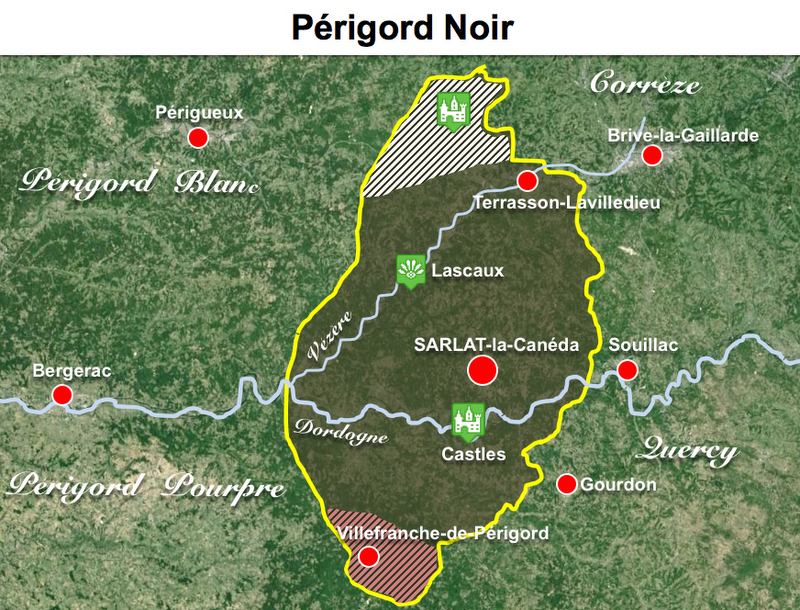
The Périgord Noir is called ‘black’ because of the dark colour created by its large sections of thick forest.
The limits of the Périgord Noir are generally accepted to correspond to the arrondissement of Sarlat.
However, two grey areas are not known for sure whether they are included in the Périgord Noir: the countryside of Villefranche-de-Périgord (with Périgord Pourpre) and Hautefort (with Périgord Blanc).
Various Tourist Offices in the villages and regions of Périgord have conflicting information about the subject on their brochures!
The Dordogne Valley in the Périgord Noir
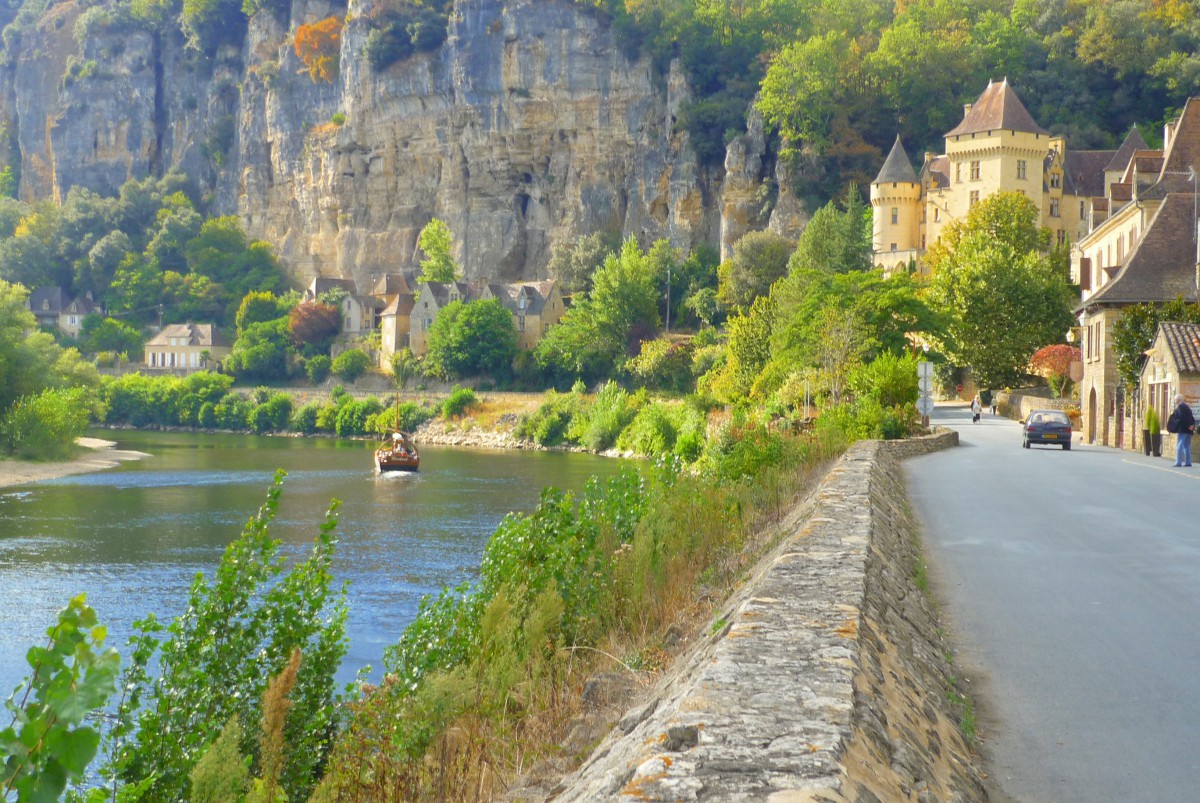
The Périgord Noir includes the popular Valley of the Dordogne River from Souillac to Limeuil.
Often known as “Vallée des Cinq Chateaux” (Valley of the Five Castles), this stretch of the Dordogne River is bordered by some of the most visited sites of all south-western France: La Roque-Gageac, the gardens of Marqueyssac, the castle-rich sites of Castelnaud-la-Chapelle, Fayrac, Beynac-et-Cazenac and Les Milandes, without forgetting the ‘bastide’ (walled town) of Domme.
Find out more about the Valley of the Dordogne.
The Castles of Périgord

Périgord is referred to as the ‘Land of 1001 Castles’.
Castle construction began in the 11th and 12th centuries.
Most were later enhanced with better defensive mechanisms during the medieval Hundred Years War battle between the kingdoms of France and England.
Castles are generally located on inaccessible sites, such as rocky outcrops or hillocks encircled by bogs.
In addition, the proximity of main access roads along the Dordogne River to the castles was strategically efficient in granting or denying the right of way.
After the war, and from the 16th century onwards, the Renaissance influence brought light, comfort and a certain extravagance to some of the castles, which makes visitors think of the chateaux of the Loire Valley.
Forty-two of the one thousand castles built in Périgord are open to the public today.
Some of the most famous castles in the Périgord Noir are:
Castelnaud-la-Chapelle

Fayrac
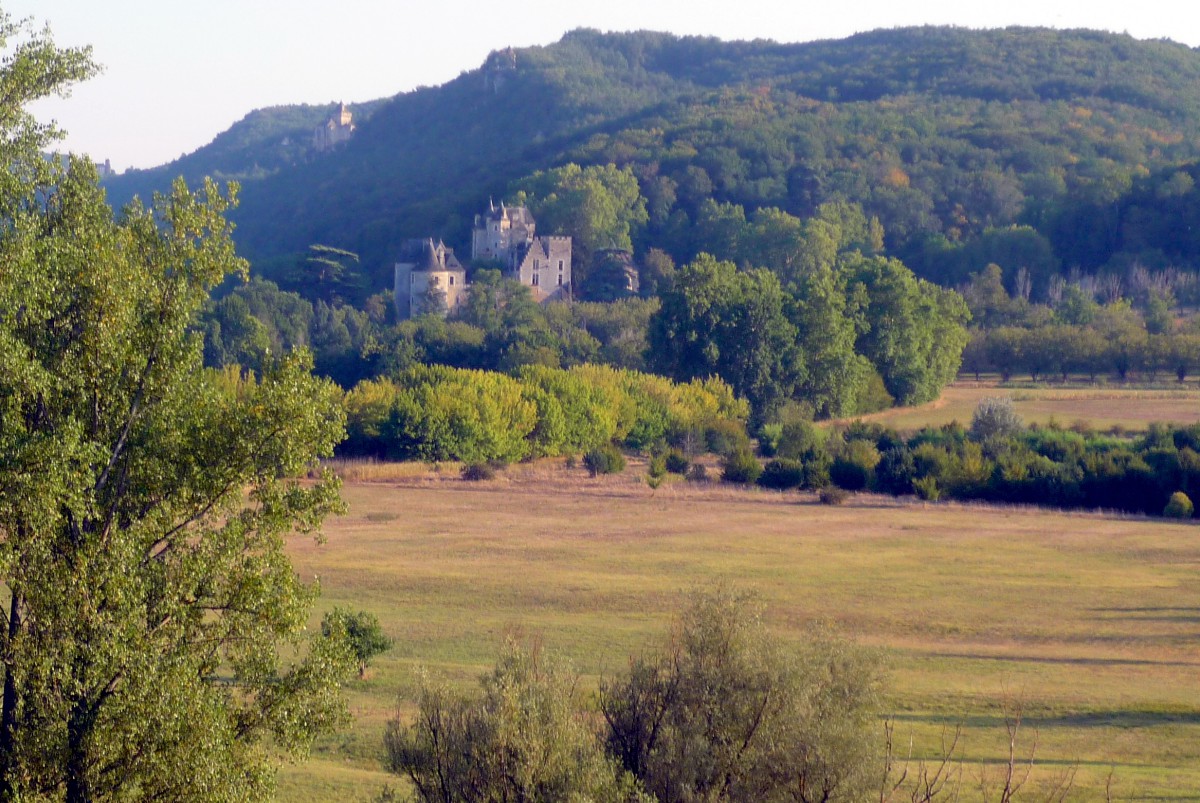
Beynac

Les Milandes
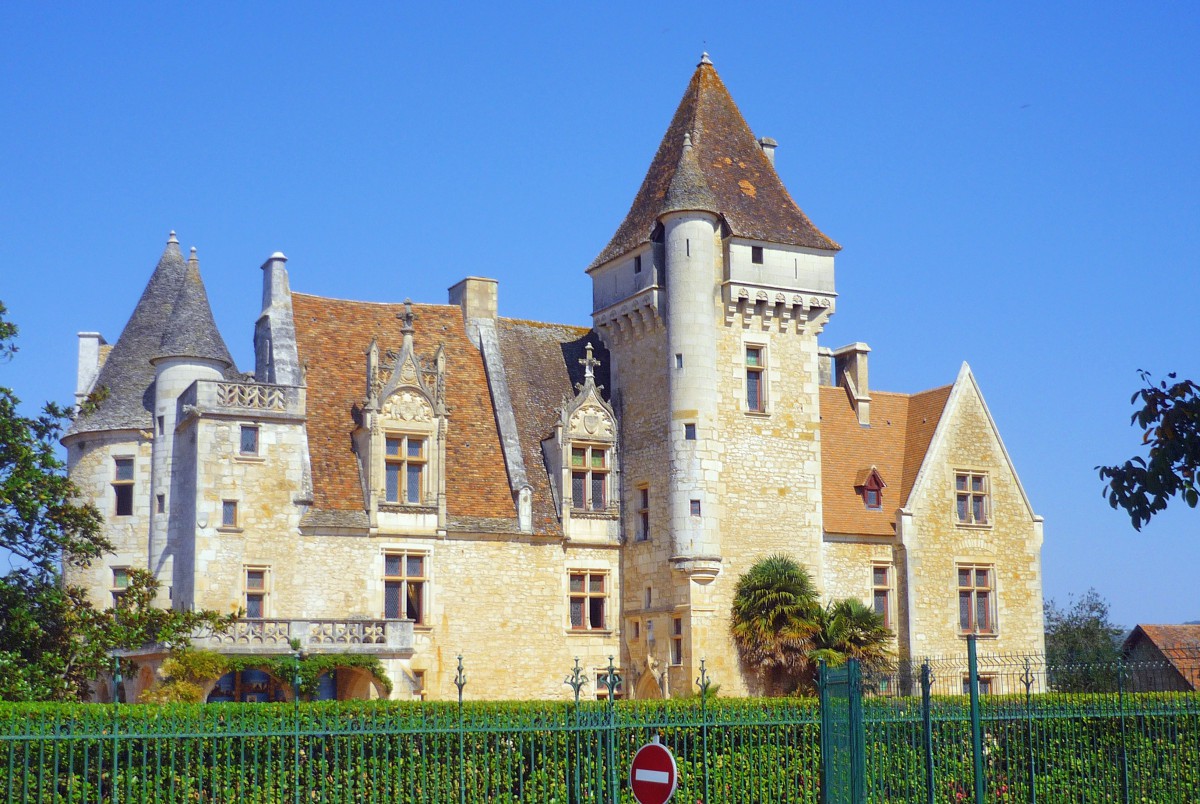
Montfort
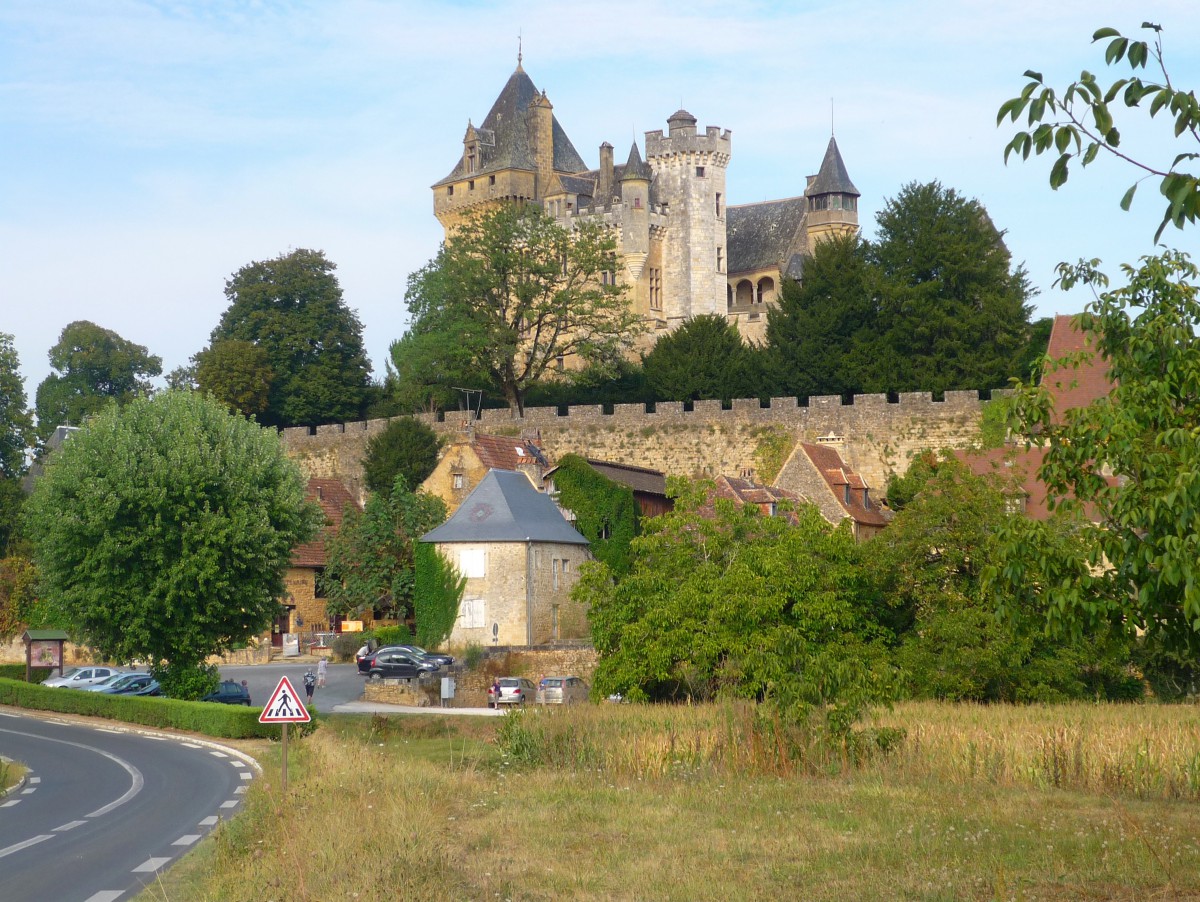
Fénelon
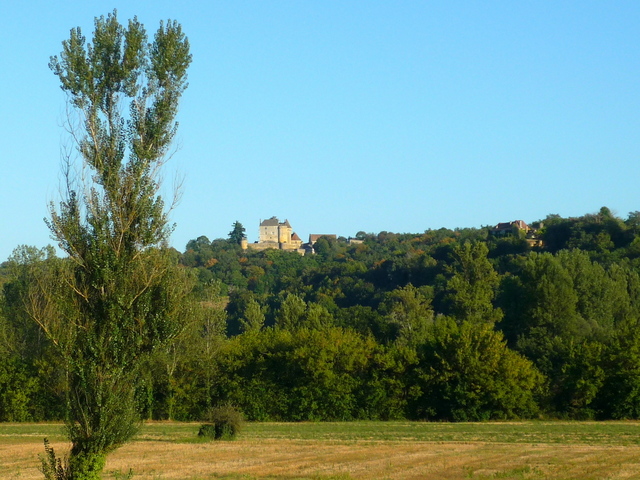
Puymartin
![Puymartin © Manfred Heyde - licence [CC BY-SA 3.0] from Wikimedia Commons](https://frenchmoments.eu/wp-content/uploads/2012/11/Puymartin-LR-©-Manfred-Heyde-licence-CC-BY-SA-3.0-from-Wikimedia-Commons-.jpg)
Commarque
![Commarque © Niveau0492 - licence [CC BY-SA 3.0] from Wikimedia Commons](https://frenchmoments.eu/wp-content/uploads/2013/07/Commarque-©-Niveau0492-licence-CC-BY-SA-3.0-from-Wikimedia-Commons-.jpg)
Losse
![Losse © Manfred Heyde - licence [CC BY-SA 3.0] from Wikimedia Commons](https://frenchmoments.eu/wp-content/uploads/2013/07/Losse-©-Manfred-Heyde-licence-CC-BY-SA-3.0-from-Wikimedia-Commons-.jpg)
Sarlat-la-Canéda
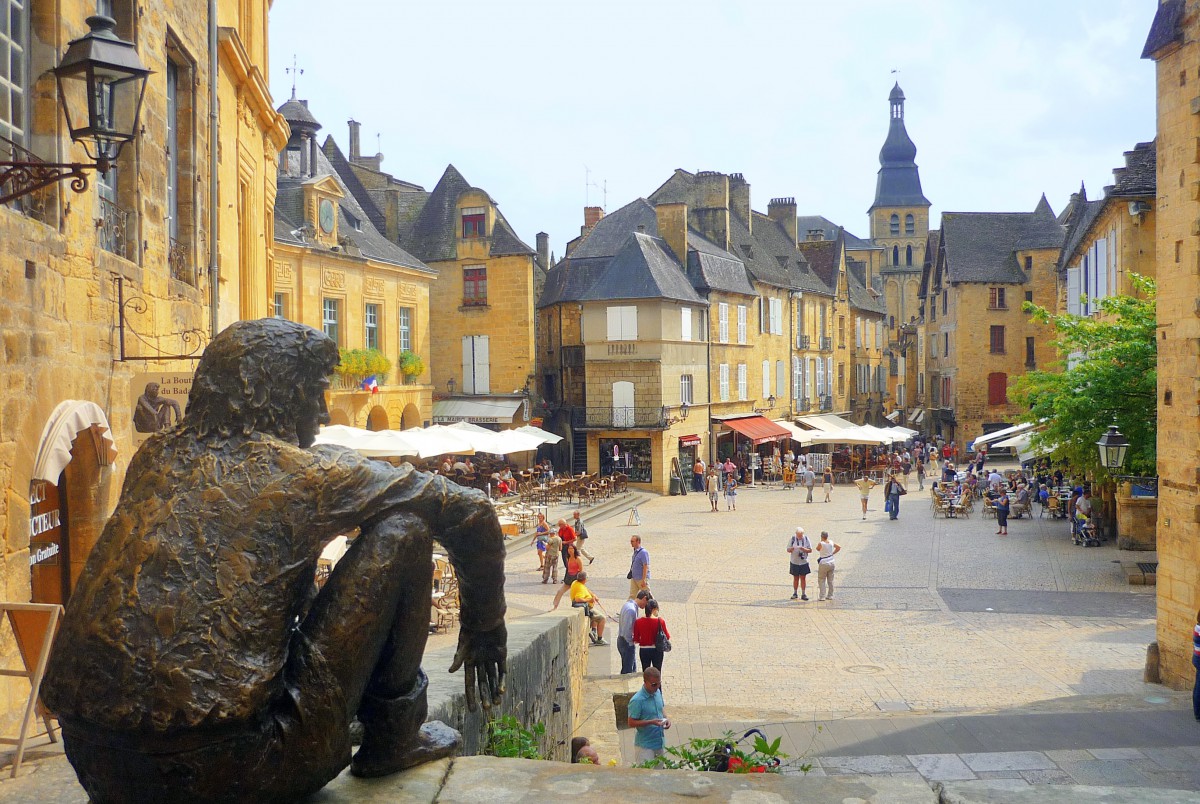
This charming little town of 10,000 inhabitants is only the third largest of the rural Périgord region.
However, it is nonetheless a major tourist attraction, welcoming more than 1.5 million visitors yearly.
For many French people, Sarlat is the place that jumps to mind when considering the Périgord region.
Located off the usual main roads, Sarlat is renowned for its rich, remarkably well-preserved architectural heritage and famous gastronomic tradition (44% of the French think that Périgord is the region where one will eat the best food in France).
Find out more about Sarlat-la-Canéda.
The most beautiful villages of the Périgord Noir
The Périgord Noir includes charming villages, some of which are listed as France’s most beautiful villages by the association “Plus beaux villages de France”: Domme, La-Roque-Gageac, Castelnaud, Beynac, Belvès, Limeuil, Saint-Léon-sur-Vézère, and Saint-Amand-de-Coly.
Domme

Find out more about Domme.
La Roque-Gageac

Find out more about La Roque-Gageac.
Castelnaud

Find out more about Castelnaud.
Beynac

Find out more about Beynac.
Belvès

Limeuil
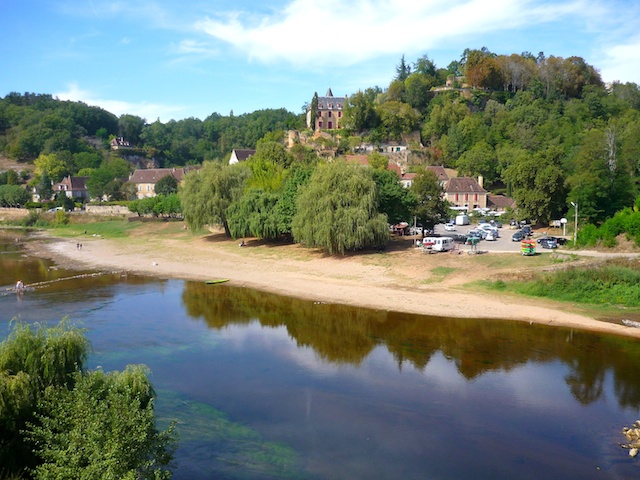
Find out more about Limeuil.
Saint-Léon-sur-Vézère
![Saint-Léon-sur-Vézère © Jochen Jahnke - licence [CC BY-SA 3.0] from Wikimedia Commons](https://frenchmoments.eu/wp-content/uploads/2013/07/Saint-Léon-sur-Vézère-©-Jochen-Jahnke-licence-CC-BY-SA-3.0-from-Wikimedia-Commons.jpg)
Saint-Amand-de-Coly
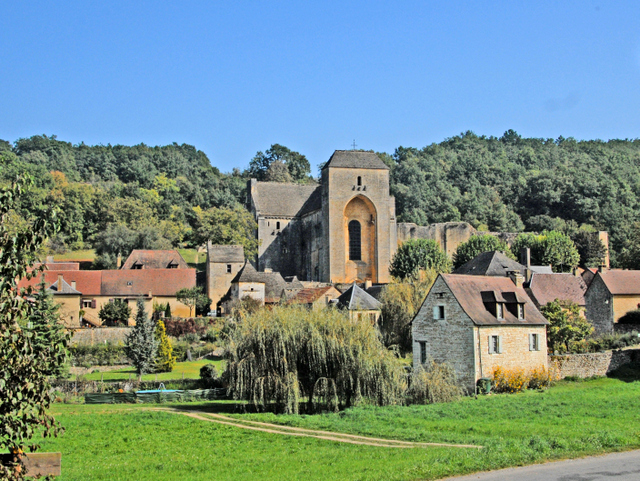
English-French Vocabulary
(f) for féminin, (m) for masculin and (v) for verbs
- abbey = abbaye (f)
- Albigensian Crusade = croisade des Albigeois (f)
- battle = bataille (f)
- barge (on the Dordogne) = gabare/gabarre (f)
- belfry = beffroi (m)
- bell tower = clocher (m)
- cave = grotte (f)
- castle = château (m)
- church = église (f)
- cliff = falaise (f)
- cloister = cloître (m)
- cobbled street = rue pavée (f)
- to discover = découvrir (v)
- Dordogne Valley = Vallée de la Dordogne
- Eleanor of Aquitaine = Aliénor d’Aquitaine
- English = Anglais (m), Anglaise (f)
- fortress = forteresse (f)
- French = Français (m), Française (f)
- garden = jardin (m)
- Gothic art = art gothique (m)
- hill = colline (f)
- house = maison (f)
- Hundred Years War = Guerre de Cent Ans (f)
- keep = donjon (m)
- knight = chevalier (m)
- landscape = paysage (m)
- lane = allée (f)
- to list = classer (v)
- market hall = halle (f)
- meander = méandre (f)
- Middle-Ages = Moyen-Âge (m)
- moat = douves (f)
- narrow street = ruelle (f)
- nut tree = noyer (m)
- oak tree = chêne (m)
- to overlook = surplomber (v)
- pilgrim = pélerin (m)/pélerine (f)
- pilgrimage = pélerinage (m)
- pin tree = pin (m)
- Prehistory = Préhistoire (f)
- priory = prieuré (m)
- promontory = promontoire (m)
- Renaissance = Renaissance (f)
- Richard the Lion Heart = Richard Cœur de Lion
- river = rivière (f)
- river trading = commerce fluvial (m)
- rocky spur = éperon rocheux (m)
- Romanesque art = art roman (m)
- Santiago de Compostela = Saint-Jacques-de-Compostelle
- street = rue (f)
- terrace = terrasse (f)
- tower = tour (f)
- view = vue (f)
- village = village (m)
- to visit = visiter (v)
- Wars of Religion = Guerres de Religion (f)
Visit the Tourist Board website of Périgord Noir – Vallée de la Dordogne.




